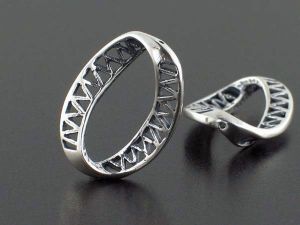
Store your jewelry in a plastic zip top bag. Be sure to remove all air from the bag. Add a “pillow” of desiccant to the zip top bag. These pillows are found in your new shoes, purses and other leather items.
Note: the "pillow" that is being referred to above is usually, Silica sand or Silica beads that absorb moisture. Making the air inside a sealed bag, etc. very dry, thus substantially slowing down the tarnish development when jewelry item isn't being worn.
Natural ways to clean, protect and patina various metals
Your jewelry is taking a beating. After weeks of wear, the metal is bombarded with dirt, water stain, soap grime and organic material from skin contact. It isn't hard to understand why that cherished sterling is now a dark ghost of it's former glory.
The good news is that it is not difficult to clean your favorite jewelry pieces and you can do it with natural remedies instead of using harsh chemicals and solvents. You can even patina metal for an antique look with products you probably already have at home.
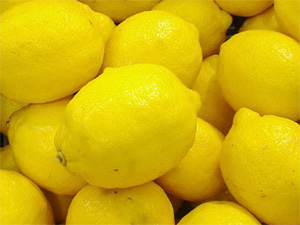
Clean brass and copper
Lemon and salt -- Make a paste of salt and fresh cut lemon (bottled lemon juice does not work). Soak the metal in it. Copper will brighten considerably, but you may need to repeat a few times. For stubborn green areas you can gently scrub the metal with a toothbrush dipped in the mixture. Rinse completely with warm-to-hot-water. Dry with paper towels or a clean, soft cloth. Brass will spot if not dried quickly.
Ketchup -- Smear ketchup on the metal and let it sit for a few minutes, or longer if heavily tarnished. Rinse completely with warm-to-hot-water. Dry with paper towels or a clean, soft cloth. Again, brass will spot if not dried quickly.
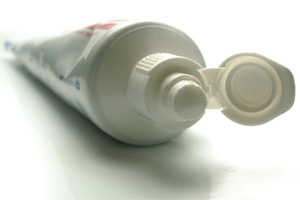
Clean sterling silver
White toothpaste -- Use your fingers to coat the silver with a small dab of toothpaste. Work the toothpaste into foam with a little warm water and rub vigorously. The toothpaste will turn gray as the tarnish is removed. Rinse and polish dry with a soft cloth. Gently scrub stubborn spots or hard to reach areas with a soft toothbrush.
Baking soda -- Make a paste of baking soda and water. Rub gently onto the metal. Continue until desired cleanliness is achieved. Rinse and polish dry with a soft cloth. Gently scrub stubborn spots or hard to reach areas with a soft toothbrush.
Baking soda and boiling water -- Line a heat resistant container with aluminum foil (pie plates work well). Sprinkle a couple of tablespoons of baking soda on to the foil. Place the metal on top of the baking soda. Slowly pour boiling water into the container. Let sit until water is cooled. Rinse and polish dry with a soft cloth. (Note: this method is not recommended for jewelry with gemstones.)
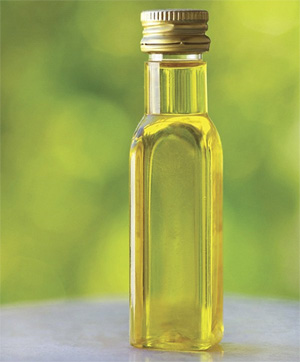
Natural sealants for metal surfaces
Traditional beeswax -- Beeswax has been used as a natural sealant for hundreds of years. After sealing metals, it gives a warm, earthy finish. Apply with a clean, soft cotton cloth using very small amounts of beeswax until evenly coated. Buff to a desired shine.
Olive oil -- Lightly dampen a clean, soft cotton cloth with the olive oil of your choice. Rub the metal as lightly as possible until evenly coated. Buff to a desired shine.
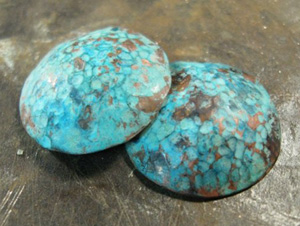
Natural patina methods
Prepare the metal -- Wear rubber gloves to handle the metal as the oil from your skin will leave a residue that will affect the patina process. Use strong dish soap to wash the metal, making sure to completely clean all oils from the surface of the metal. Rinse well with warm-to-hot-water. Dry with paper towels or a clean, soft cloth (washed without fabric softener).
Blacken sterling silver -- Boiled eggs can antique a piece in one day. This method is safe for finished jewelry with pearls or stones. Gather one chicken egg and a glass container, a large Mason jar with a lid works well. Hard boil the egg for at least seven minutes. Once the egg is boiled and still hot, cut it in half - there is no need to peel it. Place the egg at the bottom of the glass container. Using a thread, suspend the metal or jewelry from the top of the container and seal. Allow the container to sit unopened for twenty-four hours. If the patina is not dark enough, repeat the process with a fresh egg.
Creating highlights -- Highlights on chain or a textured metal surface will finish the antiqued look. Use a dry, soft cotton cloth with a little baking soda to rub the patina off the metal. The raised edges will polish and the recessed areas will stay dark. Repeat until satisfied and the buff to polish.
Patina brass or copper with a torch -- Place the metal on a brick or other fireproof surface. Pass the torch over the top of the piece. The metal with darken with continued heat. Continue until desired look is achieved. Carefully place the metal on a nonflammable surface to cool, keeping in mind that the metal will be extremely hot.
Green patina on brass or copper -- Brass and copper take on a patina in stages. The metal will darken to a brown, bronze or black and then eventually a green scale. The patina is a chemical response to ammonia and acids in the air. To expedite the patina, simply hang the metal in the shower for a few weeks until the desired look is achieved.
